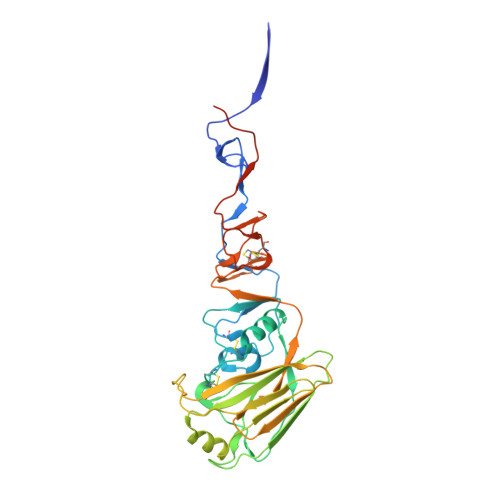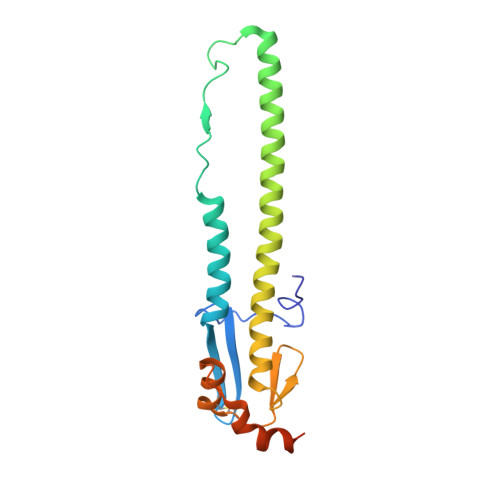N-Glycolylneuraminic Acid as a Receptor for Influenza A Viruses.
Broszeit, F., Tzarum, N., Zhu, X., Nemanichvili, N., Eggink, D., Leenders, T., Li, Z., Liu, L., Wolfert, M.A., Papanikolaou, A., Martinez-Romero, C., Gagarinov, I.A., Yu, W., Garcia-Sastre, A., Wennekes, T., Okamatsu, M., Verheije, M.H., Wilson, I.A., Boons, G.J., de Vries, R.P.(2019) Cell Rep 27: 3284-3294.e6
- PubMed: 31189111
- DOI: https://doi.org/10.1016/j.celrep.2019.05.048
- Primary Citation of Related Structures:
6E7G, 6E7H, 6N5A - PubMed Abstract:
A species barrier for the influenza A virus is the differential expression of sialic acid, which can either be α2,3-linked for avians or α2,6-linked for human viruses. The influenza A virus hosts also express other species-specific sialic acid derivatives. One major modification at C-5 is N-glycolyl (NeuGc), instead of N-acetyl (NeuAc). N-glycolyl is mammalian specific and expressed in pigs and horses, but not in humans, ferrets, seals, or dogs. Hemagglutinin (HA) adaptation to either N-acetyl or N-glycolyl is analyzed on a sialoside microarray containing both α2,3- and α2,6-linkage modifications on biologically relevant N-glycans. Binding studies reveal that avian, human, and equine HAs bind either N-glycolyl or N-acetyl. Structural data on N-glycolyl binding HA proteins of both H5 and H7 origin describe this specificity. Neuraminidases can cleave N-glycolyl efficiently, and tissue-binding studies reveal strict species specificity. The exclusive manner in which influenza A viruses differentiate between N-glycolyl and N-acetyl is indicative of selection.
Organizational Affiliation:
Department of Chemical Biology & Drug Discovery, Utrecht Institute for Pharmaceutical Sciences, Utrecht University, 3584 CG Utrecht, the Netherlands.





















